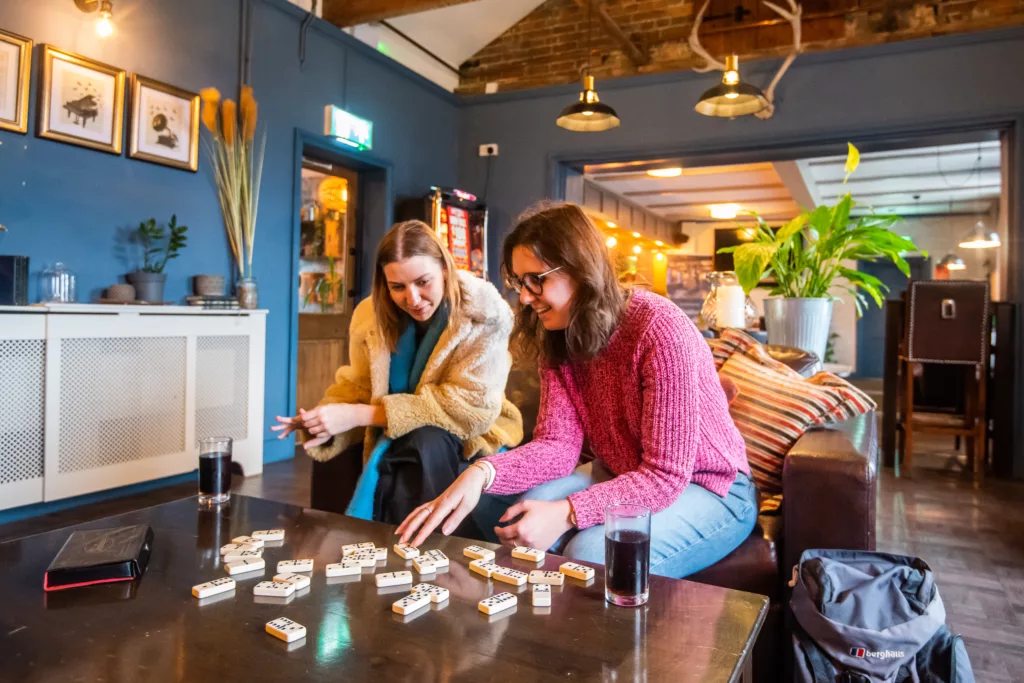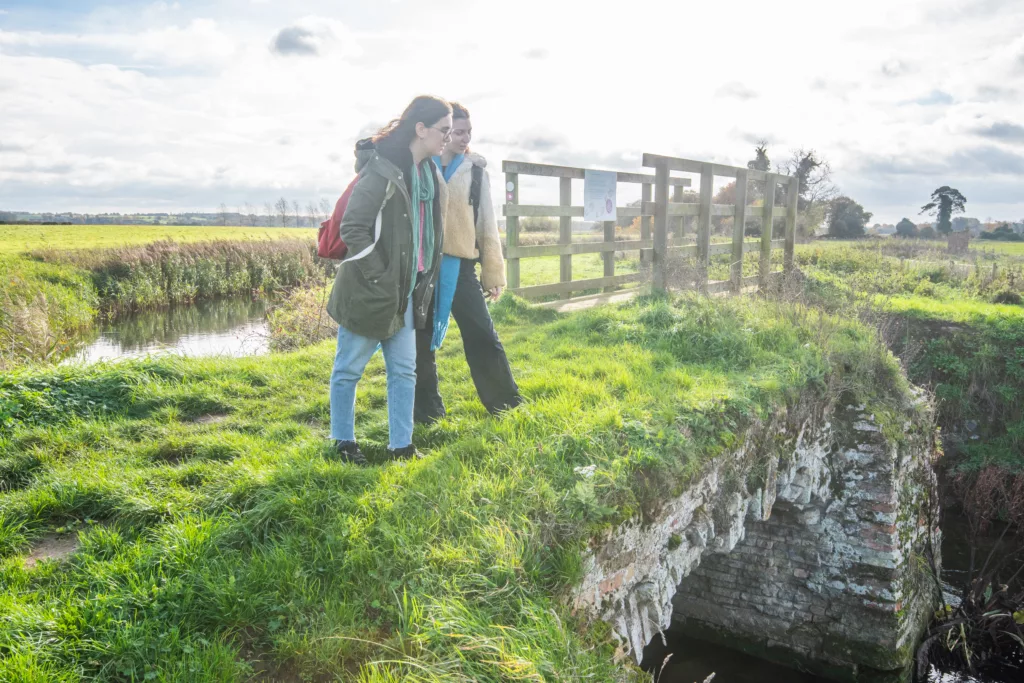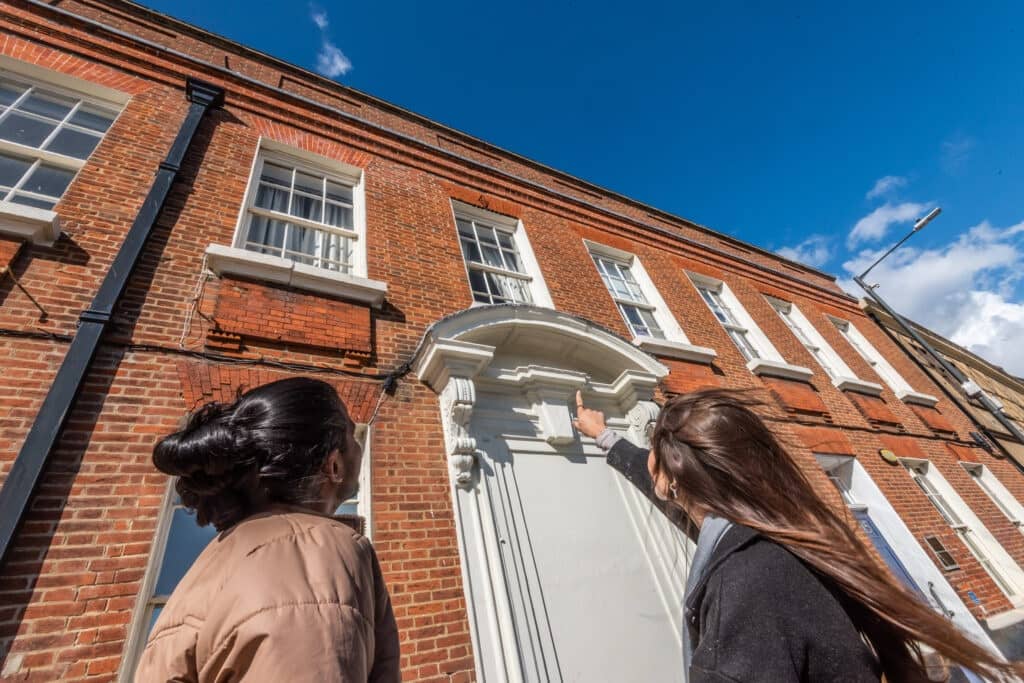
Mucky Porter and The Grey Goose Feather
It’s the 17th century and England is in the throes of Civil War. Only Fenland people know safe paths through West Norfolk’s treacherous quagmire which could suck a man down in moments. Mud defined Fenlanders, seeping even into their names, like Mucky Porter, landlord of the Silver Fleece (now The Old White Bell) in Southery.
Cromwell’s men had harried King Charles I across Norfolk. To reach his army in Oxford the King must cross the Fens. Mucky Porter agreed to guide him, but the Royalists suspected this ragged Fenman would betray them. It was the Fenland custom that whoever carried a split goose feather was entitled to protection. So Mucky pulled out a grey feather and sliced it with a knife. Keeping half, he gave half to the King. Bound by honour he guided Charles safely through the marsh.
Eventually, Charles was captured. On the eve of his beheading the King sent a messenger. ‘All that His Majesty asks is that he is afforded that due to one who holds this token,’ he said, placing a split feather in front of Cromwell. A Fenlander himself, Cromwell paled. But he allowed the execution. And, perhaps cursed, lost the war.
Twenty years later Charles’ son, Charles II, rewarded Mucky with ‘several’ acres of newly drained fertile land between Southery and Feltwell. That land has been called the Methwold Severalls ever since. And it’s still farmed by a Porter. When you stop at the The Old White Bell, raise a glass to Mucky!

Murder at the Mill?
December is made for evenings in the pub. At least that’s what Thomas Valentine thought as he walked out of the winter wind and into the warmth of the Windmill on a Monday in 1858. But some nights take a turn for the worse…
There was ‘considerable excitement’ (according to the Lynn Advertiser & West Norfolk Herald) when Valentine’s body was found in the River Nar on Wednesday morning, his skull fractured and arm sticking out of the water. It seemed the gamekeeper had stumbled off the bridge. Or was it a case of murder at the mill?!
At the inquest it was reported Valentine was drinking with the publican, William Rann, and pals who worked on the lighter boats, carrying cargo along the river. He’d been jovial, though not drunk, singing on the bridge. No unpleasantness passed between the men, just a bit of banter and the odd threat which no-one took too seriously. And yet, yards from where you stand, Thomas Valentine met his end. The jury ruled a tragic accident, others believed Rann had clouted Valentine on the head before he fell into the cold water. Whatever the truth, beware muddy river banks after a few pints!
Pentney is also the birthplace of Fred Rolfe, ‘King of the Norfolk Poachers’, whose tangles with the law and remarkable tales of 1800s East Anglia were recorded by Lilias Rider Haggard in ‘I Walked by Night’ (1935). It’s a fantastic evocation of historic rural life in Norfolk.

Pocahontas, a Mulberry and the Norfolk Farmer
Which famous woman links the ancient seaside village of Heacham in Norfolk with Jamestown, Virginia in America? She has several names including Matoaka, Princess Matoika and Rebecca Rolfe. But you might know her as Pocahontas.
Known for saving the life of captured English adventurer Captain John Smith in 1607, this favourite daughter of Chief Powhatan later married John Rolfe, a gentleman farmer from Heacham. A spirited young woman – Pocahontas means ‘little mischief’ – what must she have made of John’s Norfolk home when she came to stay here in 1616?
It’s said she planted the mulberry tree still standing in the grounds of Heacham Manor (now a hotel) from seeds brought from the homeland she never saw again. After 10 months in England, on the eve of sailing home to Virginia, she died at Gravesend aged 20. Her story was told in the Disney movie, a controversial version of the myth that’s kept Pocahontas alive in our minds for centuries. Romanticised perhaps, yet the real Pocahontas has become a symbol for peace and goodwill between cultures, celebrated by a memorial in Heacham village church.
The circular walk from Heacham seafront follows the footsteps of America’s early English settlers, which is why there’s a waterfront city in Virginia, USA called Norfolk. The area’s scattered with places named after King’s Lynn, like the Lynnhaven River whose waters flow into the Chesapeake Bay and merge with Atlantic Ocean tides which once carried a peace loving Princess to Heacham.

The Witches Heart
King’s Lynn. Friendly isn’t it? But this handsome West Norfolk town has a dark heart. And they say it belonged to a witch. Inside a diamond carved into the red brick above a window of Numbers 15 and 16 Tuesday Market there’s the shape of a heart, said to be the mark of Margaret Read, aka Shady Meg, who was burned at the stake in 1590. As she screamed in an agony of fire, her still-beating heart ripped itself from her chest, slammed into the wall at the marked spot and defying gravity, flew to the River Ouse where the waters bubbled like a cauldron as Meg’s heart sank beneath.
And you didn’t have to be suspected of witchcraft to meet a horrifying end. Found guilty of poisoning her mistress, in 1531 a King’s Lynn maidservant, whose lonely name is forgotten, was wrapped in chains draped over a gibbet above a cauldron of boiling water. She was plunged in, over and over again, until she died. There are only two other records of execution by boiling water in the UK, both at Smithfield in London, and both servants accused of poisoning.
But the real heartbreak is the way a society consumed by fear and superstition launches violent crusades against the most powerless. And the horror is, we still do. Can there really be justice for our murdered ancestors? How did they spend the last hours of their lives? We can at least bear witness to their infinite sorrow.
Build your own itinerary
If you fancy creating your own itinerary for a day trip to Norfolk or a longer visit, it couldn’t be simpler. Just go to Search Activities and select from our wide range of free and paid-for experiences, saving any that capture your imagination with the click of a button.
Once you’ve finished, you’ll find all the information stored in My Favourite, where you can drag and drop activities to create your own day-by-day itinerary! You can download this to a calendar and even share it with friends.